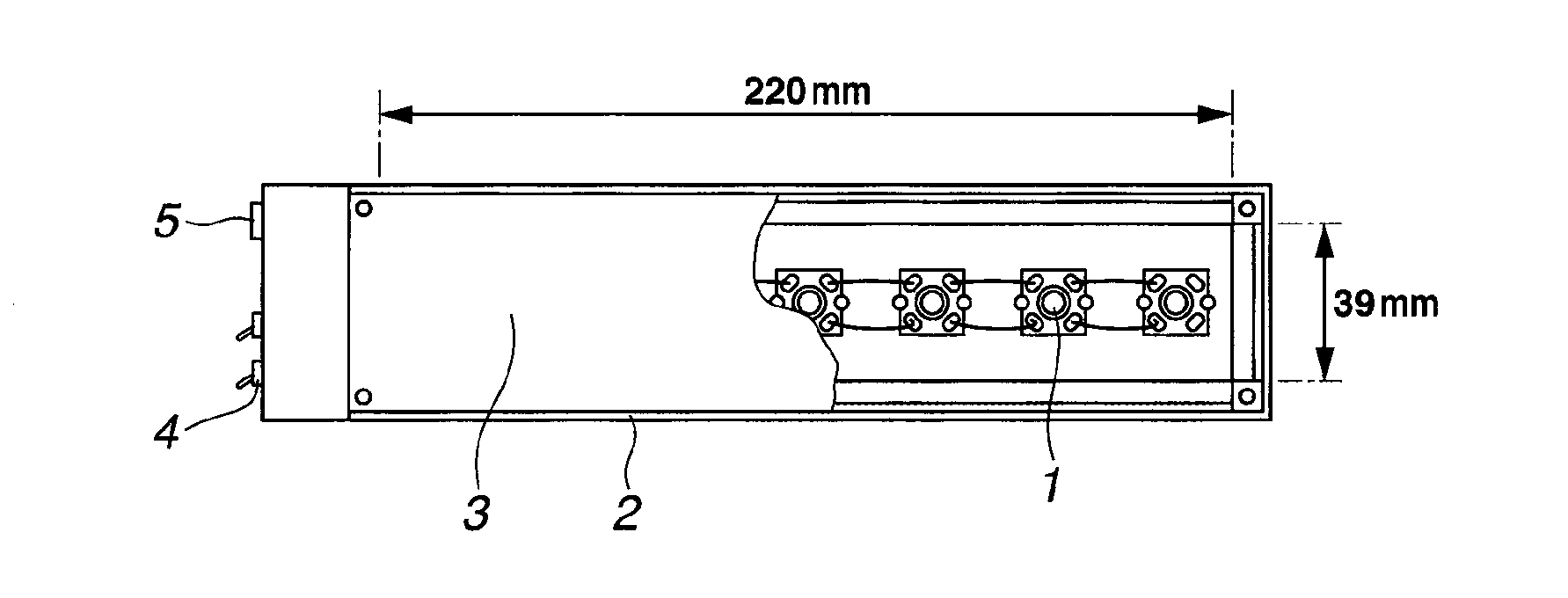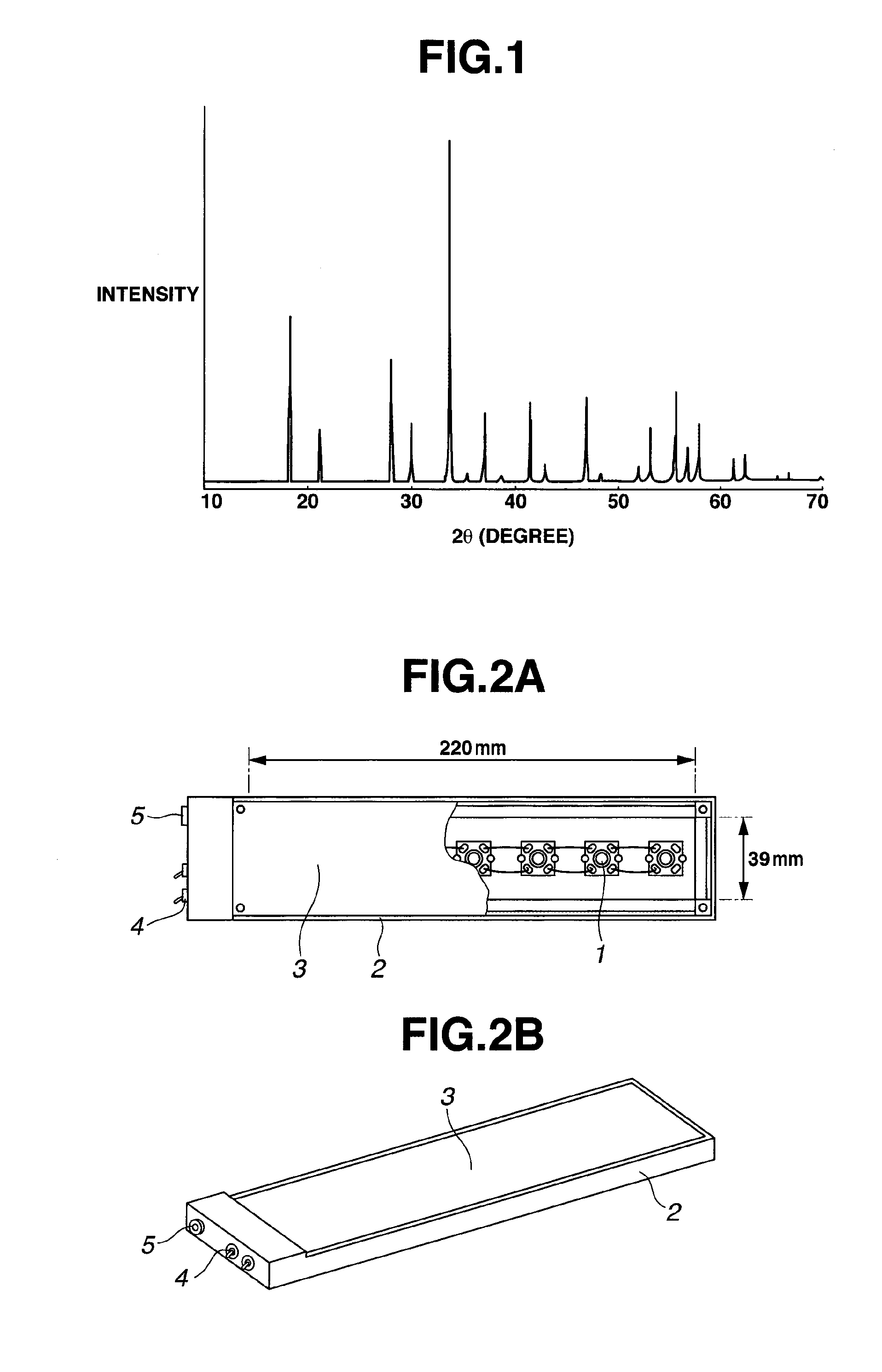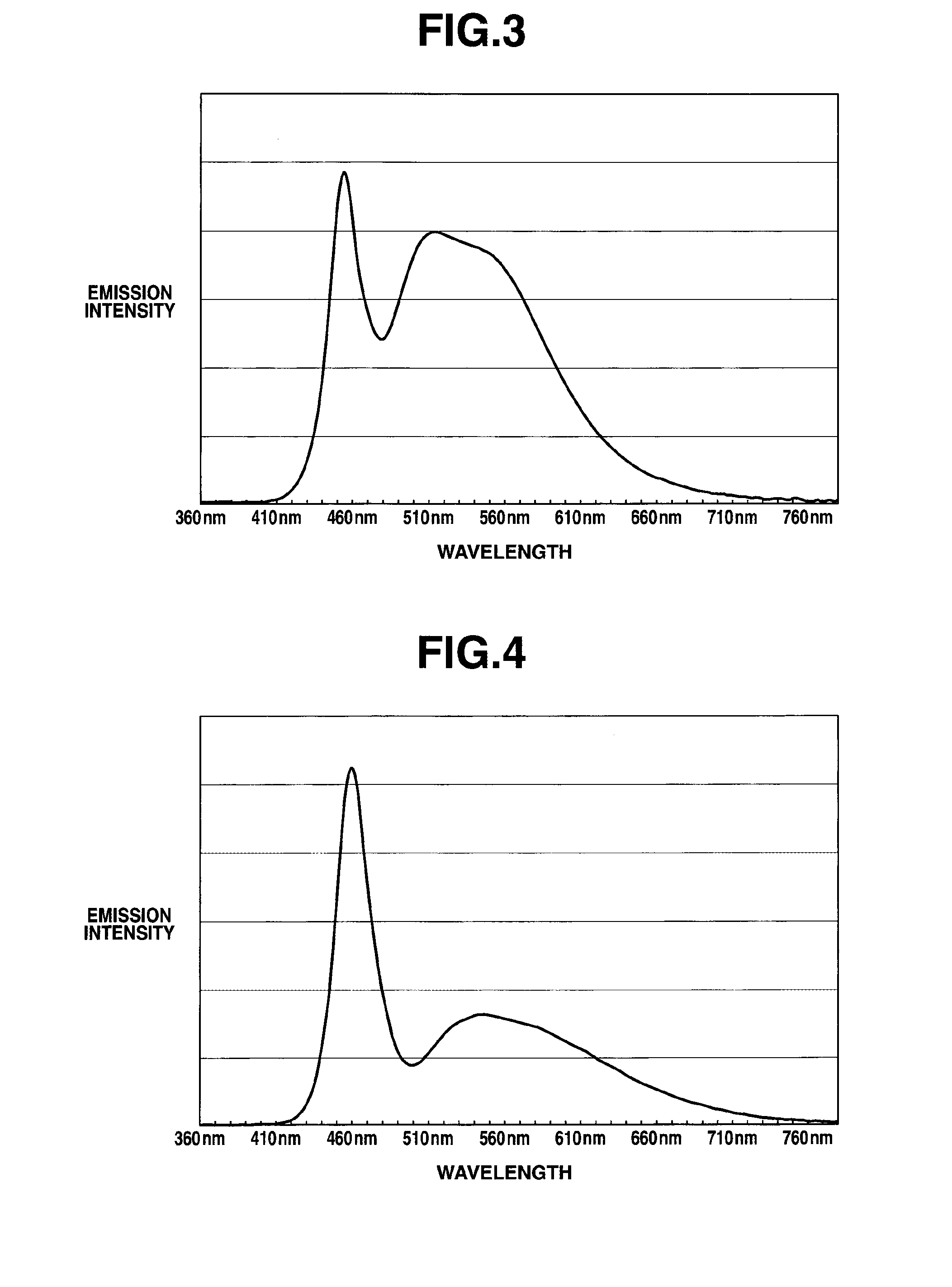Outdoor luminaire
a technology for outdoor lighting and luminaires, which is applied in the direction of luminescent compositions, semiconductor devices of light sources, lighting and heating apparatus, etc., can solve the problems of undesirable replacement and the expected lowering of the quantum efficiency of phosphor, and achieve the effect of brighter lighting and higher visual perception
- Summary
- Abstract
- Description
- Claims
- Application Information
AI Technical Summary
Benefits of technology
Problems solved by technology
Method used
Image
Examples
example 1
[0046]A powder mixture, 1,000 g, was obtained by mixing lutetium oxide (Lu2O3) powder of 99.9% purity having an average particle size of 1.0 μm, aluminum oxide (Al2O3) powder of 99.0% purity having an average particle size of 0.5 μm, and cerium oxide (CeO2) powder of 99.9% purity having an average particle size of 0.2 μm in a molar ratio Lu:Al:Ce of 2.97:5.0:0.03. Barium fluoride, 200 g, as flux was added to the powder mixture, which was thoroughly mixed. The mixture was placed in an alumina crucible and heat treated in argon gas at 1,400° C. for 10 hours. The fired product was disintegrated on a ball mill, washed with about 0.5 mol / L hydrochloric acid and then with deionized water. Subsequent solid / liquid separation and drying yielded Lu3Al5O12:Ce3+ phosphor particles (Ce-activation rate relative to Lu is 1 mol %) having an average particle size of 20 μm.
[0047]The result of XRD analysis of the phosphor particles is shown in FIG. 1. The diffraction pattern of main phase of the phosp...
example 2
[0051]A powder mixture, 1,000 g, was obtained by mixing yttrium oxide (Y2O3) powder of 99.9% purity having an average particle size of 1.0 μm, aluminum oxide (Al2O3) powder of 99.0% purity having an average particle size of 0.5 μm, and cerium oxide (CeO2) powder of 99.9% purity having an average particle size of 0.2 μm in a molar ratio Y:Al:Ce of 2.94:5.0:0.06. Barium fluoride, 200 g, as flux was added to the powder mixture, which was thoroughly mixed. The mixture was placed in an alumina crucible and heat treated in argon gas at 1,400° C. for 10 hours. The fired product was disintegrated on a ball mill, washed with about 0.5 mol / L hydrochloric acid and then with deionized water. Subsequent solid / liquid separation and drying yielded Y3Al5O12:Ce3+ phosphor particles having an average particle size of 20 μm.
[0052]An LED package with a phosphor layer was manufactured as in Example 1 except that the Lu3Al5O12:Ce3+ phosphor particles in Example 1 and the Y3Al5O12:Ce3+ phosphor particles ...
example 3
[0054]Seven blue LED packages (XLamp LX-E Royal Blue by Cree Inc.) were arranged in an aluminum chassis and connected in series as in Example 1. The Lu3Al5O12:Ce3+ phosphor particles in Example 1 were kneaded in polycarbonate in a phosphor concentration of 5 wt %, and the resulting PC compound was molded into a PC plate of 2 mm thick. This PC plate as the phosphor layer was attached at a position spaced 25 mm apart from the emissive surface of the blue LED packages. An LED luminaire of remote phosphor type was fabricated as shown in FIG. 2, wherein the protective cover 3 also serves as a phosphor layer.
[0055]The spectrum of illuminating light of the LED luminaire was measured as in Example 1. The intensity ratio S1 / S2 was 1.067.
PUM
 Login to View More
Login to View More Abstract
Description
Claims
Application Information
 Login to View More
Login to View More - R&D
- Intellectual Property
- Life Sciences
- Materials
- Tech Scout
- Unparalleled Data Quality
- Higher Quality Content
- 60% Fewer Hallucinations
Browse by: Latest US Patents, China's latest patents, Technical Efficacy Thesaurus, Application Domain, Technology Topic, Popular Technical Reports.
© 2025 PatSnap. All rights reserved.Legal|Privacy policy|Modern Slavery Act Transparency Statement|Sitemap|About US| Contact US: help@patsnap.com



